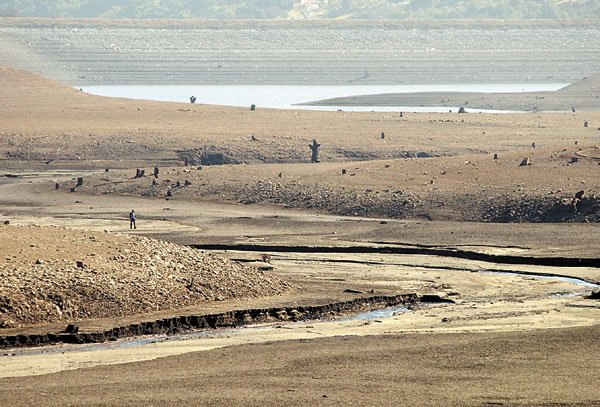It may be the state’s first official drought since 1991, but so
far local farmers and residents only seem to notice the heat.
It may be the state’s first official drought since 1991, but so far local farmers and residents only seem to notice the heat.
“The drought really hasn’t had an effect on my cherry crop. I’m more hurting by the sudden swings of cold to hot and back to cold again,” said local cherry farmer Ralph Santos. “So for the near term, I don’t see any issues, but for the long term, we may have some issues replenishing the underground aquifer if things keep up.”
California has experienced its driest spring in 88 years, and included in his drought declaration earlier this month, Gov. Arnold Schwarzenegger encouraged water districts throughout the state to beef up conservation efforts. The Santa Clara Valley Water District has reported continual efforts in this regard and vowed more after it increased rates earlier this month.
The 20-acre Fortino Winery west of Gilroy on Hecker Pass Highway won’t have much to worry about either, though, thanks to its 65-year-old vines. The persistent roots on the “dry farm” have burrowed up to 20 feet below ground to find moisture, which means owner Carlo Fortino does not have to worry about irrigation during especially dry times.
“We left it old school,” Fortino said. “We’re looking quite good this year. We’re pretty happy actually.”
For those who rely more on the water district, paying attention to the water wholesaler’s reservoirs is key. The district recharges Gilroy’s subterranean aquifer by periodically releasing water from the Uvas Reservoir, which can store about 10,000 acre feet of water. One acre foot of water is enough to supply two families of five for one year, and Gilroy consumes about 9,000 acre feet a year, according to city records. So far this year, the massive reservoir is about 9 percent, or about 900 acre feet, below average, according to district figures.
For this reason, the drought has not altered residents’ daily aquatic lives, but the lack of rain combined with recent water rate hikes means residents will likely pay more to PG&E this summer. That is because the electricity company has had to acknowledge the weather and replace cheap hydroelectric power with increasingly expensive natural gas, according to news reports and PG&E Spokesperson Brian Swanson. PG&E initially projected 21 percent of its energy resources coming from small and large hydroelectric power stations this year, Swanson wrote in an e-mail, but now that number has dropped to about 18 percent, with natural gas filling most of the gap.
So far the water district has not mandated any conservation efforts, but it has asked users to voluntarily cut back consumption by 10 percent. The city has followed suit and said it will only impose mandatory cut-backs if the water district does such. Beyond this, “Gilroy’s water rate structure has been set up to encourage water conservation, so the higher the consumption, the higher the rate,” wrote Carla Ruigh, the city’s operations services manager.
Ruigh could not remember the last time the city imposed mandatory cuts, she said, but California’s last three serious droughts occurred between 1929-34; 1976-77; and 1987-92, according to state Department of Water Resources.
For its part, the city has replaced older sprinkler heads and uses recycled water to replenish Christmas Hill Park, the Gilroy Golf Course and the Sports Park despite a rash of vandalism last winter, Ruigh said.
“Staff will continue to fine tune the irrigation systems for conservation. This may result in the turf not being as lush, but we feel we can achieve the modest water reduction the (water district) is requesting without significant damage to the turf,” Ruigh wrote in an e-mail.
Still, much of the state, including San Jose, has experienced the driest spring on record, and water imports from up north – which account for about half of the county’s water – have been scaled back by 20 to 30 percent this year to accommodate endangered species, according to the water district.
“As a result of the court-ordered reductions in water supply through the (Sacramento-San Joaquin River Delta), we’re already drawing more from our local reservoirs and groundwater aquifer,” explained Keith Whitman, the district’s water supply manager, in a press release. “When you couple the dry year with uncertainties in the Delta, the need to conserve becomes increasingly important.”
Ways and incentives to conserve water
Free Water-Wise House Call Program – A district technician will visit your home and show you where to conserve.
District rebates ranging from $100 – $400 for new water-saving residential and commercial clothes washers.
Use low-flow faucets, shower heads, reduced-flow toilet flushing equipment.
Repair leaking faucets, toilets and pumps.
Use washers only when fully loaded.
Use a commercial car wash that uses water efficiently.
Use slow-watering techniques for lawns during early morning or evening to reduce evaporation.












